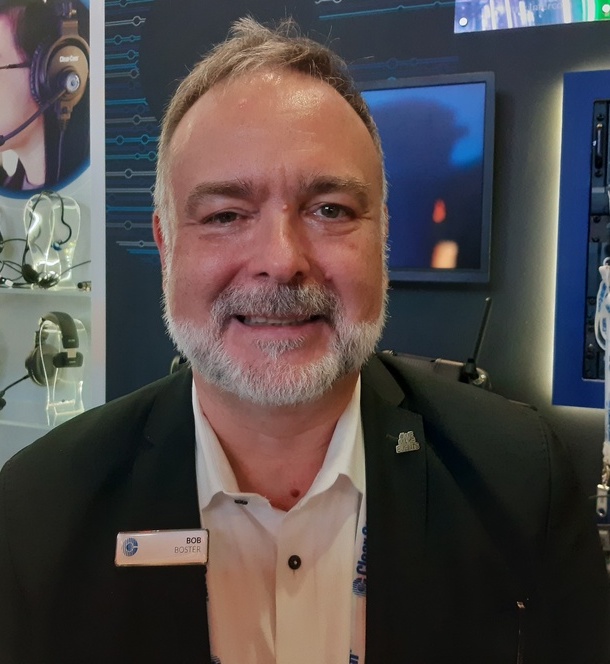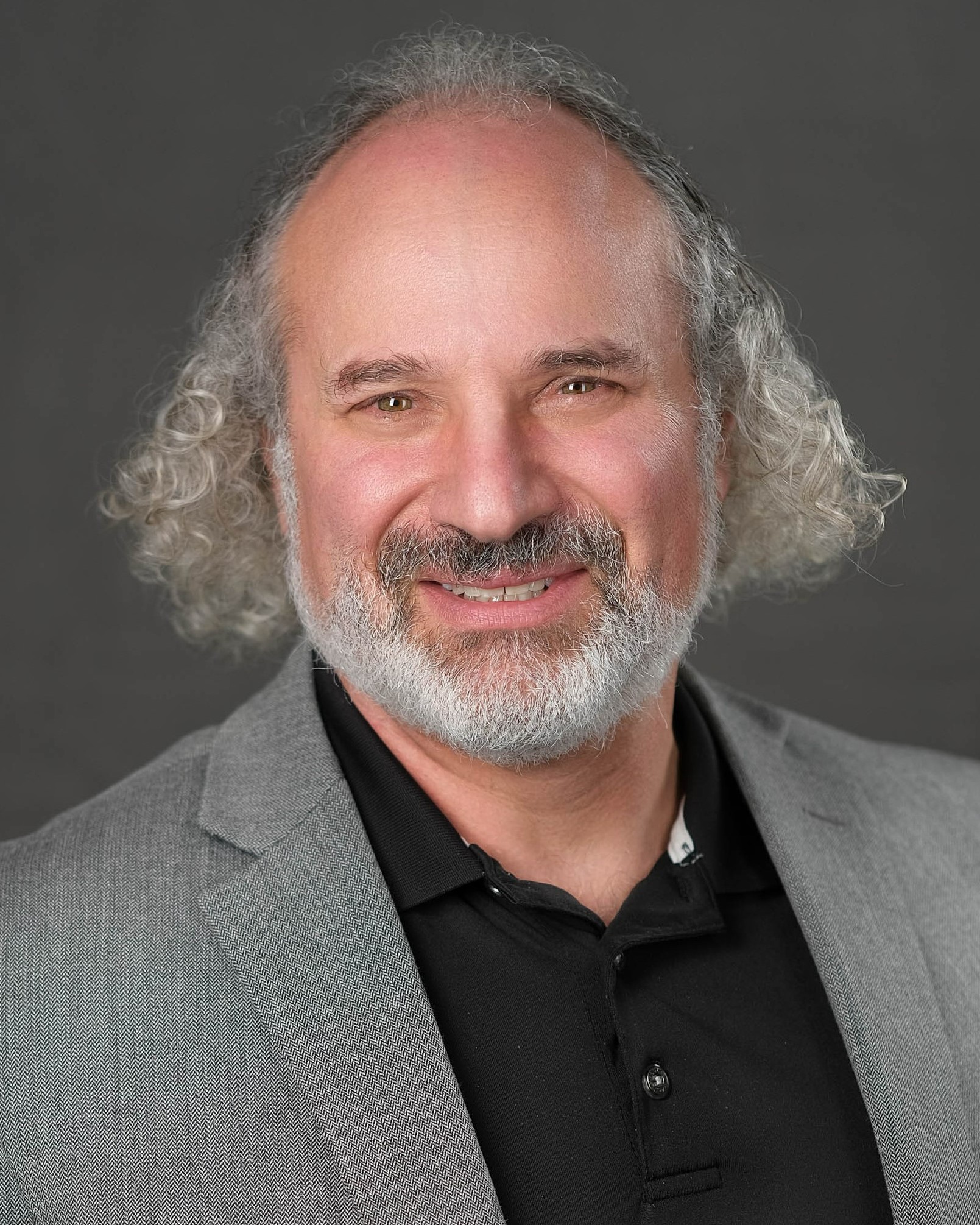Tech Focus: Intercoms, Part 1 — Comms Are Complicated by Production’s New Realities
Wireless spectrum, increasingly remote production, IP are challenges for suppliers and users
Story Highlights
Not that anyone needs to hear yet again that COVID changed everything, but one of its less obvious disruptions to broadcast-sports production was that intercom connectivity suddenly had to extend beyond the confines of venue and plant and out into the spare bedrooms of tech crews working from home.
Today, with COVID (largely) in the rear-view mirror, most of those remote-production protocols remain in place, albeit for economic rather than healthcare reasons. At the same time, wireless comms-type access to athletes on the field of play is reaching new levels of demand. For all those reasons, communications also continue to be extended, and manufacturers and users have adapted to and accommodated the new reality.
Remote Means More Wireless

Clear-Com’s Bob Boster: “A significant issue faced by comms is congestion in the wireless spectrum resulting from the diverse communication needs of different user groups.”
The multifaceted nature of sports broadcasts, from remote production to the demand for more close-up field and athlete sound to enhanced team communications, has increased the emphasis on wireless comms, according to Clear-Com President Bob Boster. And that comes at a time when RF spectrum is more pressured than ever.
“A significant issue faced by comms is congestion in the wireless spectrum resulting from the diverse communication needs of different user groups within the venue,” he says. “When multiple wireless devices — including microphones and in-ear monitors — are in operation simultaneously, managing the wireless spectrum becomes critical.”
The challenge facing intercoms for broadcast sports can boil down to a simple equation, notes Gary Rosen, VP, global sales, Pliant Technologies: the number of wireless devices keeps growing while the available RF spectrum does not. This means, he says, that teams, leagues, and productions need to squeeze more devices into an increasingly crowded RF space, and that requires cooperation between parties.

Pliant Technologies Gary Rosen points out that “the number of wireless devices keeps growing while the available RF spectrum does not.”
“All of these applications also need to be designed, set up, and deployed by fewer and fewer staff with more and more technology to be responsible for,” he explains. “RF coordination can be difficult, if not impossible at times. All parties have a stake in making the event go smoothly, so competitors need to play well with each other. The gear needs to be reliable, versatile, and reasonably easy to set up and use. At the end of the day, to achieve a successful show, everyone involved needs to make sure they allocate enough time to properly plan their setup, working with the other suppliers and venue personnel to make sure everyone knows what to expect and where they will need to compromise. Not easy, but it does work.”
With live sports broadcasting continuing to embrace remote-production models, Telos Alliance VP, Business Development, Martin Dyster emphasizes that audio and communications technology must adapt to meet the needs of a changing workflow but do so with an eye on costs.

Telos Alliance’s Martin Dyster: “When the production team is distributed across a wide geographical footprint, a monolithic matrix-based comms system is neither the most cost-effective nor the most efficient.
“When the production team is distributed across a wide geographical footprint, with team members remoted from the stadium and more-limited production personnel at the event itself,” he says, “the model of a monolithic matrix-based comms system is neither the most cost-effective nor the most efficient. Content producers are looking closely at the cost of bringing live sports to the viewer and realizing that the capital expenditure of traditional hardware is no longer a viable business model. With an increasing number of software-as-a-service solutions available for video production, attention is turning to audio-technology providers to bring products that can be spun up and down as required. However, the challenge to developers of such solutions is to minimize signal latency while providing a user experience that matches or exceeds that of traditional hardware, and at lower cost to the client.”
ST 2110 Plays a Part Here, Too

Riedel Communications’ Rick Seegull says, to minimize delay in live sports broadcasts, offsite official review requires native audio without codecs.
Like the rest of broadcast audio, comms are moving into an IP environment. However, notes Rick Seegull, SVP, technology and business development, Riedel Communications, deployment of IP-based systems introduces particular challenges, especially during critical moments requiring offsite official review in live televised events, necessitating the use of native audio without codecs to minimize delay and ensure high-fidelity audio transmission.
“The challenge lies in transporting ST 2110–based signals, specifically those supporting PTP [Precision Time Protocol], over extensive distances,” Seegull explains. “Riedel’s Artist system addresses this by offering ST 2110-30/31 audio, designed for network/studio-controlled environments. To facilitate trouble-free global transmission, Riedel employs its AES67/ST 2110 Standalone mode, allowing signal transmission within the presence of higher jitter than typically tolerated with PTP. This capability extends to Riedel’s flagship RSP-1200 series panels, enabling their placement in remote locations worldwide, all seamlessly connected to the main site — whether the network, stadium, or another central hub. The imperceptible latency ensures that multiple panels can be grouped together in remote locations without impacting the operators in close proximity.”
Seegull cites the application of this technology in the NFL Network’s use during Super Bowl LVIII, for which onsite operators were seamlessly linked to network studios in Inglewood, CA.
What comms will continue to do, all agree, is to evolve to meet the constantly changing needs of production communications.
“Connectivity and communications are key, especially as remote production moves more of the elements to different locations,” says Rosen. “Everyone has to connect.”
Click here for Tech Focus: Intercoms, Part 2 — Suppliers’ Offerings Reflect Increased Reliance on Remote Production.
Click here for Tech Focus: Intercoms, Part 3 — Comms Are Key for Chess Competitions, Debuting as an Olympic Sport in Paris.
